|
Each year, the WDNR uses fawn and doe counts from August and September to calculate a fawn-to-doe ratio and estimate the size of the deer herd in Wisconsin. We get the fawn-to-doe ratio by dividing the number of fawns by the number of does. In 2015, the statewide fawn-to-doe ratio was 0.89, meaning there were about 9 fawns for every 10 does. Of course, this number varied a lot across Wisconsin.
Counts submitted by the public via Operation Deer Watch and by WDNR biologists are the primary data we use to calculate fawn-to-doe ratios. This information is very useful but somewhat biased, since observations are made during daylight hours and mainly along roadsides. Snapshot Wisconsin trail cameras give us a new way to count deer because the cameras operate all the time and are placed in more natural spaces.
In our first attempt to use Snapshot Wisconsin trail cameras to calculate fawn-to-doe ratios, we used Snapshot Wisconsin photos from August 2016 that were classified as deer by trail camera volunteers in Iowa and Sawyer Counties. There were 211 deer pictures from 13 cameras in Iowa County and 331 deer pictures from 13 cameras in Sawyer County. This is a very limited sample but it let us look for early patterns.
One thing was immediately obvious: we see the same does and fawns over and over again at each camera site. Before we could come up with any accurate estimates, we would have to account for repeated counts of the same deer. One method we tried was to use the maximum number of fawns and does seen in any single photo from each camera site. This leaves us with a much smaller number of deer observations at each site, but ensures that we do not over-count. When using this method, we end up with preliminary fawn-to-doe ratios between 0.7 and 1.0 that are close to what we would expect.
Stay tuned for more on fawn-to-doe ratios and other results as we continue to add photos and classifications!
Image: Fawn and doe Snapshot Wisconsin photos from August 2016 in Iowa County that were used for this first look at fawn-to-doe ratios.
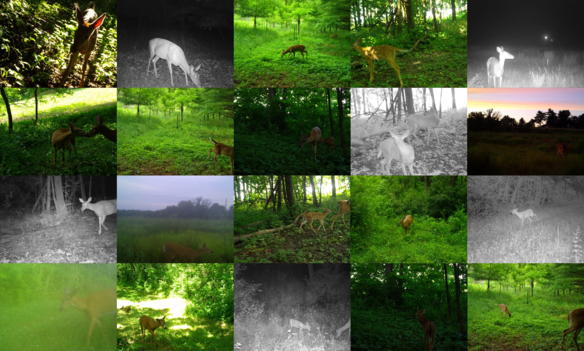
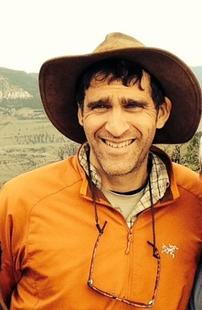 |
|
Phil Townsend is a professor of Forest and Wildlife Ecology at UW-Madison. He grew up in Tennessee and Virginia, the child of a mother from Michigan’s Upper Peninsula and a father from Southern California. Phil spent much of his youth exploring the woods and hills near his home on foot and bike, and grew up with a great love of nature and the solitude it provides. (This probably comes from being the youngest kid in a big, noisy family.) Phil went to college at the University of Virginia, and after a few years of uncertainty went to graduate school in Geography at the University of North Carolina. Phil’s research focuses on the use of remote sensing imagery to understand forest processes. In Snapshot Wisconsin, remote sensing is used to understand the phenology of vegetation (timing of green-up and leaf-fall), which are important to explaining habitat use and food resources for wildlife. Phil is married with two children in college and one in high school. In his spare time, he is an avid bicyclist, hiker and music fan.
|
New Message Board for Trail Camera Hosts
If you are interested in interacting virtually with other Snapshot Wisconsin trail camera volunteers please visit our talk boards on Zooniverse. We have recently created a new board specifically for our trail camera volunteers. This is a place where you can ask questions of other volunteers, show off awesome photos from your Snapshot cameras and more. Hopefully it will also serve as a place where potential new volunteers can get the inside scoop from current volunteers. Many of you have asked for something like this so we are pleased to be able to make it happen. The Snapshot Wisconsin team will moderate this board so it is another opportunity to interact with us. However, if you need specific help from a Snapshot team member sending an email will get the quickest response.
No Man Made Objects in Snapshot Wisconsin photos
Please remember when deploying a Snapshot Wisconsin trail camera that we need to make sure there are no man made objects in the images captured. The primary reason is because we need to keep the location from being identifiable when the images are shared publicly on Zooniverse. Additionally, many man made objects could have an influence on animal behavior which could bias the data that we are collecting. Finally, it is best to have as natural of a scene as possible. So, if you have any man made objects (houses, barns, fence posts, benches, beehives, telephone poles, etc) in your photos please remove the objects if possible or re-position your camera to exclude the object. This may be possible by rotating your camera. If you do have to move the camera a re-deployment is not necessary as long as the location is within 5-10 feet of the original location. If you need help please email us.
|
Snapshot Wisconsin Season 3 on Zooniverse finished up this week. Thanks to all 3,439 of our Zooniverse volunteers for helping to classify photos this season! Season 3 included 29,085 subjects and was completed in 58 days.
Don't worry if you are already in withdrawal for Wisconsin Wildlife photos - Season 4 is on the way soon!
|
|
 |
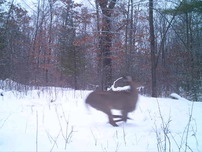 |
|
Starting in January we are going to be sharing interesting photo sequences every Saturday on the Wisconsin DNR Facebook page as part of a new feature called Snapshot Saturdays. Be sure to check it out and post your own awesome Snapshot Wisconsin photos in the comments!
|
|
Last month we shared a bit about our new outreach banner composed of a mosaic of Snapshot Wisconsin photos. Dougal Walker recently contributed a post for our blog about the process of creating the banner. On the right is a picture of Michelle, the graphic artist with a full size mock-up of the banner that she printed out and taped together. To see a closer view of the fox mosaic click here.
|
|
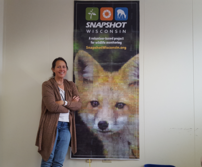 |
We will share one awesome animal photo each month. To enter one of your favorites from a Snapshot Wisconsin camera please send the image as a jpeg attachment with the animal classification, county location and date taken along with the reason why you love the image to DNRSnapshotWisconsin@wisconsin.gov. If you prefer we not share your name in the post please let us know.
This month's image was submitted by Skylar Primm who teaches at High Marq Environmental Charter School in Marquette County. The image shows a coyote that has captured it's next meal, it is hard to tell what it might be but it could be a rabbit or turkey. Skylar also shared that on the next visit to the forest nearby they found some coyote scat with lots of rabbit hair. Thanks for sharing this glimpse of an animal going about it's normal day to day life with us Skylar!
Other interesting photos from our cameras can be viewed on our Pinterest board!
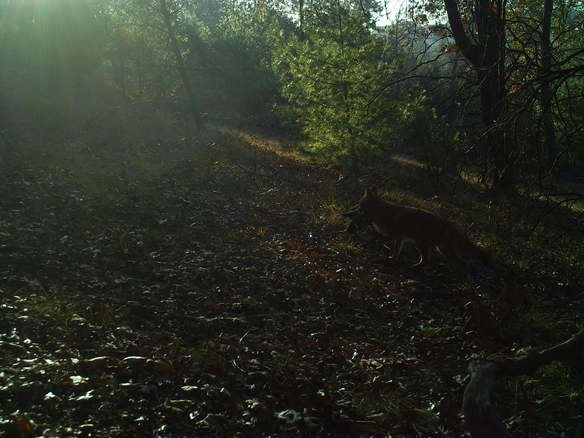
Contact Information for Snapshot Wisconsin
Phone: 608-572-6103
Participate on Zooniverse: www.SnapshotWisconsin.org
Find out more details on our webpage:
dnr.wi.gov Keyword "Snapshot Wisconsin

|